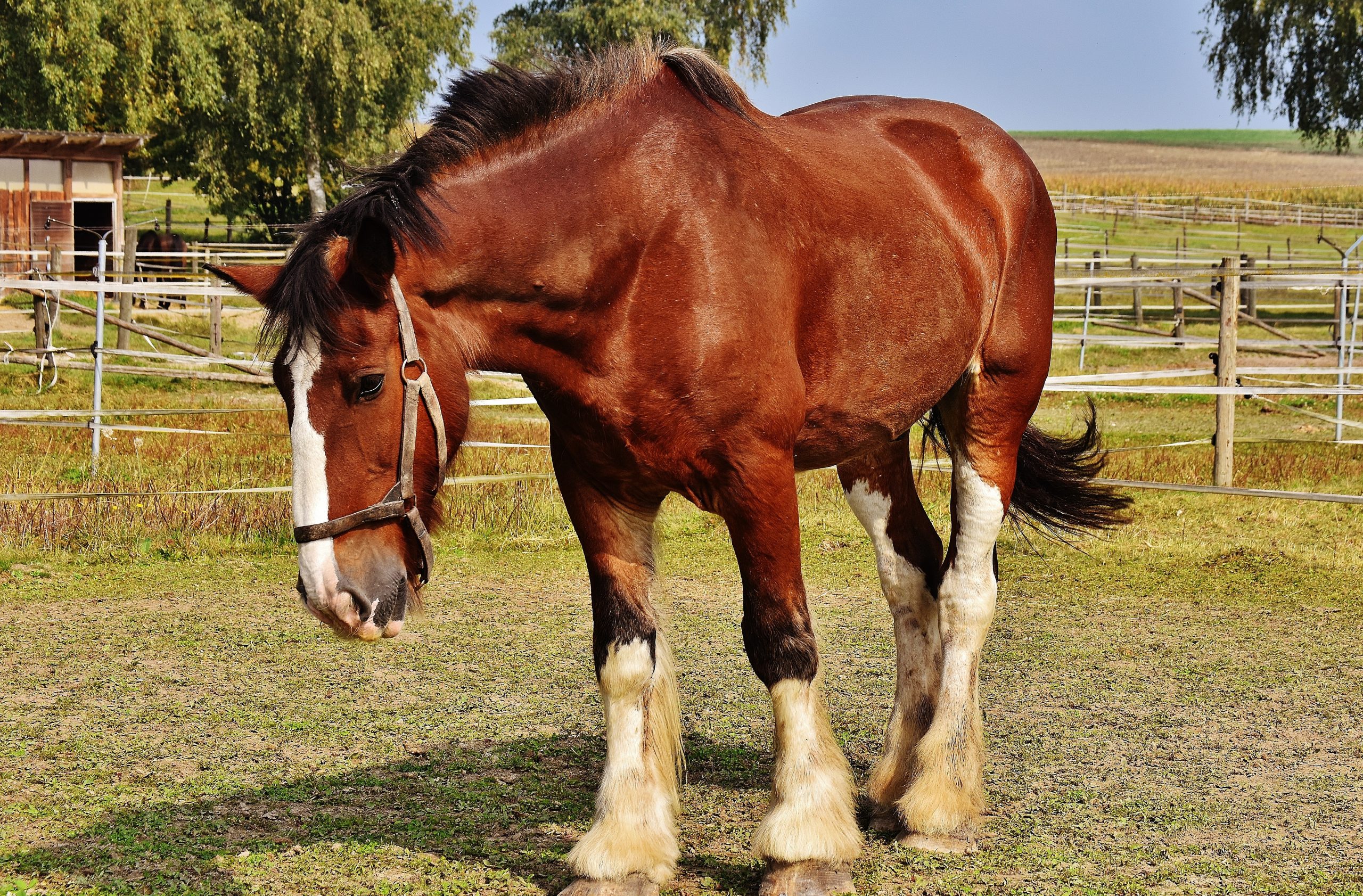Chronic progressive lymphedema
What is lymphedema?
Chronic progressive lymphedema (CPL) is a skin disease that affects draft horse breeds such as Clydesdales, Shire, Friesian, Gypsy Vanner, Cob, Percheron, and Belgian draft horses. It starts at an early age (as young as 2 years) and leads to progressive swelling of the legs and development of severe chronic skin changes such as hyperkeratosis and dermal fibrosis with thick skin folds and nodules. Secondary infections contribute to the chronic changes, and the condition gives rise to severe discomfort to the horse and commonly leads to euthanasia. (Lindgren et al 2020). Therefore, CPL is not “chronic pastern dermatitis”, as the disease is a primary lymphatic abnormality with secondary infections, but the presence of bacterial dermatitis will worsen the signs of CPL.
How do you know when scratches is actually CPL?
When a persistent case of scratches or distal limb dermatitis is present in draft breeds, the diagnosis is made by clinical picture, and usually reveals advanced changes already (Lindgren et al 2020). Secondary infections (‘scratches’) and chorioptic mange infestations are a frequent occurrence, and may be the first indication of a problem for most owners when they observe the horse leg stomping and scratching or the presence of scabs. (Powell 2009; Affolter 2013; Lindgren et al 2020). Early lesions include skin thickening, limb swelling, slight crusting and skin folds at the pastern, which are often missed because of heavy feathering. In horses as young as 2 years old, small ripples in pastern can be palpated, as can the pitting edema, and loss of definition over the fetlock and distal cannon bone. As the disease progresses, CPL is associated with deteriorating skin surface anomalies and incurable deformations (Fig.1) (de Keyser et al 2014). As in humans with lymphedema, equine CPL demonstrates impaired circulation and lymph drainage and results in impaired skin barrier function and local immune response. Added to this is the heavy feathering typically seen and the moisture within the skin folds, and horses suffering from CPL are asking for bacterial overgrowth (Affolter 2013). Not only are the lesions often pruritic, but they can be painful, causing lameness or reluctance in limb handling. As the condition progresses, the interval between infections reduces, and the depth of bacterial penetration increases, leading to lymphangitis in some cases despite appropriate antibiotic or anti-parasitic therapy. Each bout of infection or mange will further disrupt the lymph drainage due to progressing fibrosis. Hooves are also affected as the coronary band is also diseased, creating a broad, deformed hoof that is brittle. Cracks, chips and splits are often present, as are recurrent bouts of thrush, hoof abscess and laminitis.
Is CPL inherited?
CPL has a prevalence of 96% within Belgian and some German breeds. Genetic components are therefore likely to play a role in this disease, we just haven’t found the gene(s) yet (Lindgren et al 2020). Without knowing the genetic predisposition or heredity of the disease, it is impossible to make breeding recommendations to avoid to condition. One study on Belgian Draft horses suggested that stallions are earlier and more severely affected than mares, and that Black and Bay horses are more affected than roan (de Keyser et al 2014). Sadly, most adult draft horses appear to be affected by CPL to some degree.

More information available at:
Affolter 2013, Chronic Progressive Lymphedema in Draft Horses, VCNA Equine, 29: 589-605.
Lindgren et al 2020, Genetics of Skin disease, VCNA Equine.
de Keyser et al 2014, Genetic parameters for chronic progressive lymphedema in Belgian Draught Horses, JABG
Powell 2009, Therapy for horses with CPL, BMJ
Fedele & Rautenfeld 2007 Manual lymph drainage for equine lymphoedema‐treatment strategy and therapist training, EVE; Powell 2009, Therapy for horses with CPL, BMJ,
Powell & Affolter 2012, Combined decongestive therapy including equine manual lymph drainage to assist management of chronic progressive lymphoedema in draught horses, EVE

